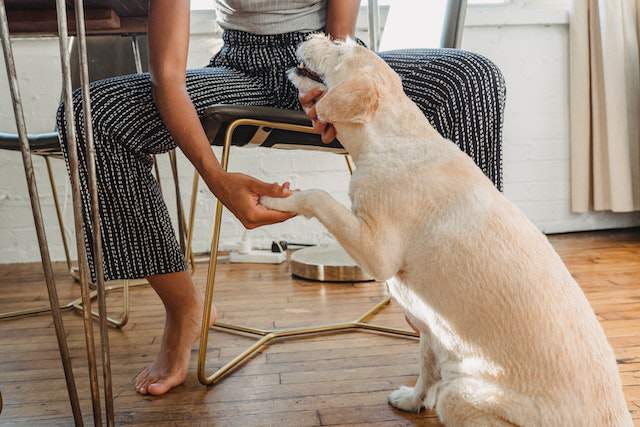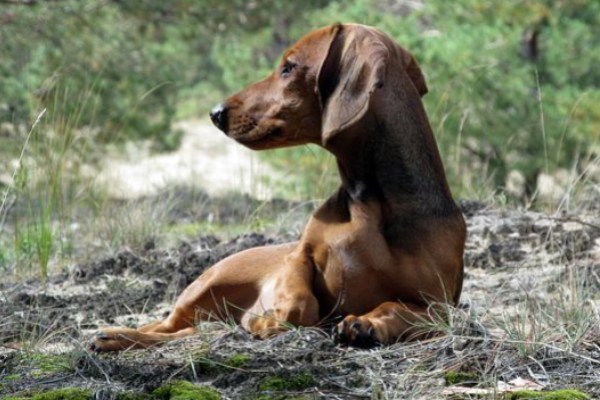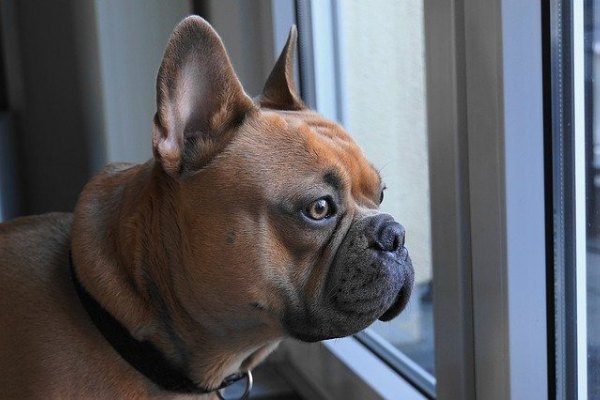Interesting Tips About Caring For Dog Paws

Hey there, fellow dog lovers! Today, let’s talk about something we often overlook: caring for dog paws. They may be cute and cuddly, but those paws need some TLC too!
In this quick read, we’ll explore simple and effective ways to keep our dog’s paws healthy and happy. So, grab a treat, sit back, and let’s dive into the world of paw care!
Anatomy of a Dog’s Paw
A dog’s paw consists of five main parts: the metacarpal pad, digital pads, dewclaw, carpal pad, and nails.
The metacarpal pad is a large pad located on the underside of the paw, providing cushioning and support.
The digital pads are smaller pads that are found on the tips of the toes, aiding in traction and shock absorption.
The dewclaw is a small vestigial digit located higher up on the leg, which some dogs have removed for safety reasons.
The carpal pad is a small pad located above the metacarpal pad, assisting in stability and grip.
Finally, the nails are hard structures at the end of each toe, providing traction and helping with digging and scratching.
Benefits of Caring For Dog Paws
Caring for dog paws is essential for maintaining their overall health and well-being.
Regular paw care can prevent various issues such as infections, injuries, and discomfort.
By trimming their nails, you can avoid painful overgrowth and potential damage to furniture or floors.
Additionally, moisturizing and inspecting their paws can help identify any abnormalities or early signs of injury, allowing for prompt veterinary attention.
Overall, proper paw care ensures that dogs can walk, run, and play comfortably, leading to happier and healthier lives.
Caring For Dog Paws
Taking care of your dog’s paw pads is an important part of their overall health and well-being.
Here are some practical tips for daily care routines for a dog’s paw:
1. Regular Paw Inspections: It’s essential to inspect your dog’s paw pads regularly for any signs of injury, irritation, or foreign objects like thorns or splinters. Look for redness, swelling, cuts, abrasions, or any other abnormalities.
2. Paw Cleaning: Clean your dog’s paws regularly to remove dirt, debris, and bacteria. Use a soft cloth or pet-safe wipes to wipe their paw pads gently. Be sure to clean between the toes and around the nails.
3. Moisturizing: Just like our skin, a dog’s paw pads can become dry and cracked. You can use a pet-safe moisturizer or paw balm to keep their paw pads hydrated. Apply a thin layer and massage it into the paw pads. This can help prevent dryness and cracking.
4. Trimming Nails: Keep your dog’s nails trimmed to prevent them from becoming too long and causing discomfort or issues with walking. Be careful not to cut the nails too short, as it can cause pain and bleeding. If you’re unsure how to trim your dog’s nails, consult a professional groomer or veterinarian.
5. Paw Pad Protection: Depending on the weather and terrain, your dog’s paw pads may need extra protection. In extreme hot or cold temperatures, consider using booties or paw wax to protect their paws. Booties can also be helpful on rough or abrasive surfaces to prevent injuries.
6. Avoid Harmful Substances: Be mindful of the surfaces your dog walks on and avoid areas treated with chemicals, such as deicing agents or pesticides. These substances can be harmful to their paw pads if ingested or absorbed through the skin.
7. Regular Exercise: Regular exercise is important for your dog’s overall health, including their paw pads. It helps to strengthen their paw muscles and promote good circulation. However, be mindful of overexertion or excessive walking on hard surfaces, as it can lead to paw pad injuries.
8. Professional Grooming: While daily care routines are essential, it’s also important to take your dog to a professional groomer regularly. They can provide a thorough grooming session, including trimming the hair around the paw pads, which can help prevent matting and the accumulation of debris.
How to Clean a Dog Paw
Cleaning your dog’s paws is an important part of their grooming routine, especially after outdoor activities or walks.
Here is a step-by-step process to clean your dog’s paws:
- Prepare the necessary supplies: Gather all the supplies you’ll need, including a clean towel, a bowl of warm water, pet-safe shampoo or paw wipes, and a pet-safe moisturizer or paw balm.
- Calm and secure your dog: Find a quiet and comfortable area where you can clean your dog’s paws. Make sure your dog is calm and secure, either sitting or lying down. You may need to gently restrain your dog or have someone help hold them if they are squirmy or anxious.
- Examine your dog’s paws: Before cleaning, carefully examine your dog’s paws for any cuts, abrasions, or foreign objects like thorns or splinters. If you notice anything unusual or if your dog shows signs of pain or discomfort, consult your veterinarian before proceeding with cleaning.
- Dip the paws in warm water: Dip your dog’s paws, one at a time, into the bowl of warm water. Gently hold the paw and soak it for a few seconds, allowing any dirt or debris to loosen.
- Clean between the toes: Use your fingers or a soft brush specifically designed for cleaning paws to gently scrub between your dog’s toes. Be thorough but gentle to avoid causing any discomfort. Pay attention to the areas between the pads where debris can accumulate.
- Dry the paws: After cleaning each paw, carefully pat them dry with a clean towel. Make sure to remove any excess moisture, especially between the toes, as it can lead to skin irritation or infection.
- Apply pet-safe moisturizer or paw balm: Once the paws are dry, you can apply a pet-safe moisturizer or paw balm to keep the paw pads hydrated and protected. This can help prevent dryness, cracking, and discomfort.
- Reward your dog: Throughout the process, praise and reward your dog with treats and positive reinforcement to create a positive association with paw cleaning. This will make future paw-cleaning sessions easier and more enjoyable for both you and your dog.
How to Trim a Dog Paw Fur
To trim a dog’s paw fur, you can follow these step-by-step process:
Step 1: Gather the necessary tools
Before you start trimming your dog’s paw fur, make sure you have the right tools ready. You will need a pair of grooming scissors or clippers specifically designed for pet grooming. It’s important to use tools that are safe and comfortable for your dog.
Step 2: Find a quiet and comfortable space
Choose a quiet and well-lit area where you and your dog can both feel comfortable. It’s important to create a calm environment to help keep your dog relaxed during the grooming process.
Step 3: Familiarize your dog with the tools
Before you begin trimming, allow your dog to sniff and inspect the grooming tools. This will help them become more comfortable with the tools and reduce anxiety.
Step 4: Start with positive reinforcement
Begin by rewarding your dog with treats and praise to associate the grooming process with positive experiences. This will help your dog feel more at ease and cooperative during the trimming process.
Step 5: Lift and secure the paw
Gently lift your dog’s paw and hold it securely but not too tightly. This will give you better access to the paw fur and prevent accidental cuts or injuries.
Step 6: Trim the fur
Using grooming scissors or clippers, carefully trim the excess fur around the paw pads. Be cautious not to cut too close to the skin to avoid any accidental cuts. Trim the fur evenly and follow the natural shape of the paw.
Step 7: Check for any matting or tangles
While trimming, check for any matting or tangles in the paw fur. If you come across any, gently detangle them using a comb or your fingers. It’s important to remove any matting or tangles to keep your dog’s paws clean and prevent discomfort.
Step 8: Take breaks if needed
If your dog becomes anxious or restless during the grooming process, take breaks as needed. It’s important to prioritize your dog’s comfort and well-being.
Step 9: Reward and praise
After you have finished trimming the paw fur, reward your dog with treats and praise for their cooperation and good behavior. This positive reinforcement will help create a positive association with the grooming process.
Step 10: Clean up
After the trimming is complete, clean up any trimmed fur that may have fallen on the floor or grooming area. Properly dispose of the trimmed fur to maintain a clean and hygienic environment.
Signs of Dog Paw Problems
Dog paw problems can manifest in various signs and symptoms, indicating potential issues with the paws.
Some common signs of dog paw problems include:
Licking or chewing: Excessive licking or chewing of the paws can indicate discomfort or irritation in the area. Dogs may lick or chew their paws due to allergies, infections, or injuries.
Cuts, tears, or abrasions: Visible cuts, tears, or abrasions on the paw pads can be a sign of injury. These can be caused by sharp objects, rough surfaces, or accidents.
Dry or cracked paw pads: Dry or cracked paw pads may indicate a lack of moisture or a condition known as hyperkeratosis. This can make the paws sensitive and prone to further injury.
Swelling or inflammation: Swollen or inflamed paw pads can be a sign of an infection or allergic reaction. It can also be a result of trauma or an underlying health condition.
Limping or lameness: Dogs may limp or favor one paw if they are experiencing pain or discomfort. This can be caused by injuries, infections, arthritis, or other underlying conditions.
Bleeding: If there is visible bleeding from the paw pads, it may indicate a cut, laceration, or puncture wound. It’s important to address bleeding promptly to prevent infection and provide appropriate treatment.
Changes in behavior or mobility: Dogs with paw problems may exhibit changes in behavior, such as reluctance to walk or play. They may also have difficulty standing, climbing stairs, or jumping.
Dog Paw Problems
The following are some common dog paw problems and how to address each:
1. Cuts, Sores, or Red Spots
Cuts, sores, or red spots on a dog’s paw can be caused by various factors, such as sharp objects, rough terrain, or allergies.
To address this issue, it is important to clean the affected area with a mild antiseptic solution and gently remove any debris or foreign objects. Apply an antibiotic ointment and cover the area with a clean bandage if necessary. Monitor the paw for signs of infection or worsening symptoms, and consult a veterinarian if needed.
2. Swelling or Fluid-Filled Blisters
Swelling or fluid-filled blisters on a dog’s paw can be caused by injuries, insect bites, or allergic reactions.
To address this problem, gently clean the affected area with a mild antiseptic solution and apply a cold compress to reduce swelling. If the blister is intact, avoid popping it as it may lead to infection. Keep the area clean and dry, and monitor for any signs of infection or worsening symptoms. Consult a veterinarian if the swelling or blisters persist or worsen.
3. Ingrown Toenails
Ingrown toenails occur when the edge of a dog’s nail grows into the surrounding skin, causing pain and discomfort.
To address this issue, it is best to seek veterinary assistance. A veterinarian can safely trim the nails and, if necessary, remove the ingrown portion. They may also prescribe pain medication or recommend proper nail-trimming techniques to prevent future ingrown nails.
4. Pad Injuries
Pad injuries can occur due to excessive heat, cold surfaces, rough terrain, or chemical irritants.
To address this problem, inspect the paw pads for any cuts, burns, or signs of irritation. Clean the affected area with a mild antiseptic solution and apply an appropriate paw pad balm or ointment to soothe and protect the pads. If the injury is severe or shows signs of infection, consult a veterinarian for further evaluation and treatment.
5. Dry or Cracked Pads
Dry or cracked pads can be caused by environmental factors, such as hot or dry conditions, or lack of proper paw care.
To address this issue, regularly moisturize the paw pads with a pet-safe paw balm or moisturizer to prevent dryness and cracking. Avoid using human moisturizers or products containing harmful ingredients. Additionally, provide your dog with adequate hydration and avoid walking them on hot surfaces during peak temperatures.
Remember, it is important to regularly check your dog’s paws for any signs of problems and provide appropriate care and attention.
If you are unsure or concerned about any paw issues, it is always best to consult with a veterinarian for proper diagnosis and treatment.
Preventing Dog Paw Injuries
Preventing dog paw injuries is essential to ensure the well-being and comfort of your furry friend.
Here are some best ways to prevent dog paw injuries:
1. Regular Paw Care and Inspection: Make it a habit to regularly inspect your dog’s paws, especially after outdoor activities or walks. Look for any signs of cuts, abrasions, foreign objects, or other injuries. Keep the paws clean and free of mud, dirt, and debris. Trim the hair around the paws to prevent matting and discomfort.
2. Use Dog Booties: Dog booties provide excellent protection for your dog’s paws, especially in extreme weather conditions or rough terrains. Booties can prevent paw pad injuries, burns, cuts, and frostbite. Choose booties that fit properly and are made from durable materials.
3. Avoid Hot Surfaces and Chemicals: During hot weather, avoid walking your dog on hot pavement, asphalt, or sand, as these surfaces can cause burns and blisters on the paw pads. Additionally, be cautious of chemicals, such as ice melts or road salts, which can be harmful if ingested or irritate your dog’s paws. Rinse your dog’s paws with warm water after exposure to these substances.
4. Maintain Proper Nail Length:
Long nails can cause discomfort and affect your dog’s gait, leading to paw injuries. Regularly trim your dog’s nails to an appropriate length, or consult a professional groomer or veterinarian for assistance. Avoid cutting the nails too short to prevent bleeding or injury.
5. Provide Proper Exercise and Conditioning: Ensure that your dog receives regular exercise and conditioning to keep their muscles, joints, and paws strong and healthy. Gradually increase the intensity and duration of exercise to avoid overexertion or strain on the paws. This will help prevent injuries and improve overall paw health.
Remember, if you notice any signs of paw injury or if your dog is experiencing pain, limping, or excessive licking/chewing of the paws, seek veterinary attention promptly.
Your veterinarian can provide proper diagnosis, treatment, and guidance for preventing and managing paw injuries.
Read more about trimming your dog’s nails.
Frequently Asked Questions
How often should I check my dog’s paws for any issues?
It’s a good idea to check your dog’s paws regularly, ideally after each outdoor adventure. Pay attention to any cuts, abrasions, or foreign objects stuck between the toes. Prevention is key!
What’s the best way to clean my dog’s paws after a walk?
Cleaning your dog’s paws is important to remove dirt, debris, and potential irritants. Simply use a damp cloth or pet-safe wipes to gently wipe their paws. Don’t forget to dry them thoroughly afterward!
Are there any paw care products I should use regularly?
While not necessary for every dog, paw balms or moisturizers can help prevent dryness and cracking. Look for products specifically designed for dogs, as human products may contain ingredients that are harmful to them.
Can I trim my dog’s nails myself, or should I go to a professional?
You can trim your dog’s nails at home, but it requires proper technique and some practice. If you’re unsure, it’s best to consult a professional groomer or veterinarian who can guide you and ensure your dog’s safety.
How do I protect my dog’s paws during extreme weather conditions?
Extreme heat or cold can be tough on your dog’s paws. Consider using dog booties or paw wax to provide protection. Additionally, avoid walking your dog on hot pavement or icy surfaces to minimize discomfort or injuries.
My dog keeps licking their paws excessively. What should I do?
Excessive paw licking can indicate an underlying issue, such as allergies or skin irritation. It’s best to consult your veterinarian to determine the cause and appropriate treatment. They may recommend a change in diet, medication, or specialized paw care.
Conclusion
Wrapping up our paw-tastic journey on caring for dog paws, remember to pamper those furry little tootsies with regular nail trims, moisturizing paw balm, and protective booties for those adventurous outings.
So go ahead, give your pup’s paws the love they deserve, and watch them strut their stuff with confidence and comfort! Happy paw care, everyone!






